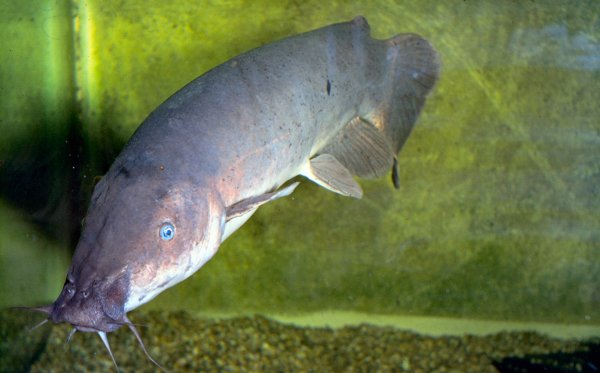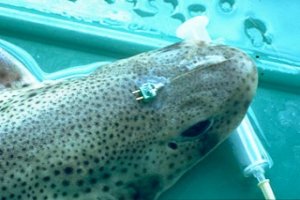Stichting De Traditie -
Cultural
Heritage



Utrecht - Science
Comparative Physiology - Electrosensitive Fish

The surface of metal wires immersed in water, generates corrosion currents that can be perceived by some fish species. The accompanying electrical potential differences lie in the micro- and millivolt range. The sensitivity to such electrical currents was first described in 1917 for brown bullheads by Parker & van Heusen. In 1935, Dijkgraaf discovered a similar phenomenon with sharks during a research internship at the Sea Aquarium in Naples. Only in 1962 he realized, after publications of Lissmann (1958) and Murray (1962), that these currents were detected with the aid of a specialized sensory system, the ampullae of Lorenzini. From 1962 on, a line of research into the electrosensitive abilities of catfish and dogdish was put in motion that would end in 2006. Read more . . . . .

The ancient Greeks and Egyptians already knew that some species of fish were able to produce strong electric shocks. Only a few centuries ago, this was also recognized by Westerners in the electric eel from South America; a fish that can deliver an electric shock of a few hundred volts strength. The electricity producing organs of the electric eel are easily recognizable by dissection. The strange thing is that similar bodies were found in smaller species of fish, which seemed to produce no electrical discharge. However, Lissmann discovered in 1951 that these bodies indeed emanated a discharge, but much weaker, only a few volts strong. It is the merit of Lissmann that he made plausible that there exists a sensory system tuned to these weak electrical discharges, that can extract information from the environment by using the fields generated by the electric organs (videoclips). One of the electroreception pioneers was Thomas Szabo, nominated as acting lecturer of Comparative Physisoslogy at Utrecht University in 1969.

Electrosensory organs are generally divided into the categories ampullary and tuberous. The tuberous organs are closed cavities under the skin; they are used for the detection of the fast and short (ms) discharges of electric organs. The ampullary organs on the other hand are adapted to low-frequency fields; usually with frequencies below 100 Hz. Electrosensory organs had already been described morphologically for centuries back, but were considered mechanical senses or glands. Electrophysiological examination of the ampullae of Lorenzini revealed eventually their sensitivity to electrical stimuli. Afterwards, behavioral research demonstrated the biological significance of the electric sense: orientation, navigation, localization of prey, and communication.

A long time it was not understood what the biologically adequate stimulus of the ampullae of Lorenzini were. It was Sir John Eccles, a Nobel prize winner, who procured the solution for this enigma, when he visited Dijkgraaf's lab in 1969. Eccles suggested to have a closer look at the DC potentials in the pharynx, near the gills of fish, because large standing epithelial potentials could be measured there. Earlier, the search image was inspired by Lissmann's suggestion that muscle potentials of swimming or breathing prey would be the appropriate stimuli; a completely different frequency range. Dijkgraaf himself thought for a long time that the reaction of sharks to the metal wire immersed in water was due to leakage current from the mains.

The focus of electroreception research at the Laboratory of Comparative Physiology of the University of Utrecht was mainly the biological significance of the electric sense of sharks and catfish; fish that do have an elecric sense, but do not have electric organs. The outcomings of this line of research are presented in the pages on Electroreception Publications, research protocols, internship reports, and Theses; a list of all publications between 1915 and 1995 is given in the '80 years of Comparative physiology' page. Typical for the Utrecht electrophysiological approach was studying fish aes much as possible alive and intact. This was achieved by recording nerve activity using implanted electrodes in freely moving animals, and by non-invasively monitoring the transport of information in a single electroreceptor nerve fiber in sedated fish.
20200116